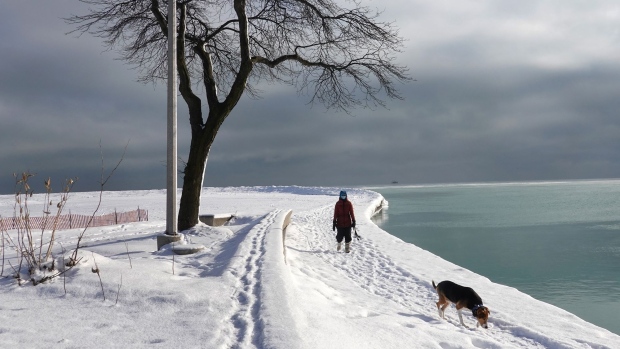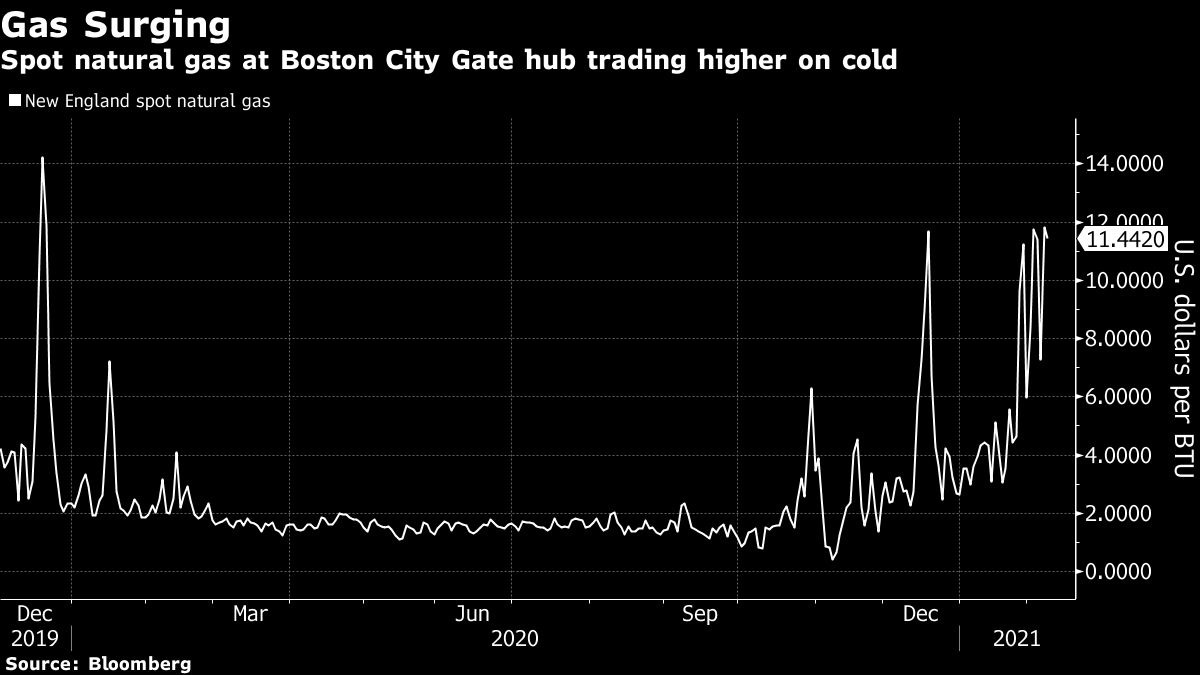Feb 9, 2021
Coldest blast of winter shakes energy markets across the U.S.
, Bloomberg News

Winter’s iciest blast is advancing across the U.S., dialing up demand for heating fuels and threatening to set cold-weather records from the Great Plains to the Gulf of Mexico.
Temperatures are expected to tumble 30-40 degrees Fahrenheit (17 to 22 Celsius) below normal through the central U.S. as a weakened polar vortex unleashes Arctic chill across the continent. In the Northeast, temperatures will be 10-15 degrees lower through the next week.“This should be the coldest week of winter for the U.S.,” said Mike Ventrice, a meteorological scientist with IBM. “It looks like this will be a two-week cold wave when we look at peak heating demand.”
Prices for natural gas and heating oil, fuels used to heat homes, are surging as the cold sets in. Spot gas at the Waha hub in Texas traded at a two-year high Monday while, at Boston’s Algonquin City Gate hub, prices neared a two-year high. Gas futures for March delivery, meanwhile, are trading at the highest seasonal level in four years, suggesting the market anticipates tighter supply through the winter.

Expectations of stronger demand for heating oil in the frigid Northeast are also extending diesel’s rally in New York, with futures settling Monday at the highest level in more than a year.
“This is impacting all major markets with the exception of the southeast,” said Ventrice.
Temperatures have already plunged across the Great Plains and upper Midwest with readings below zero degrees Fahrenheit from Montana to Minnesota, according to the National Weather Service. The lowest temperature in the U.S. as of Tuesday afternoon was minus 34 set in both Merrill and Land O’Lakes, Wisconsin, according to the Weather Prediction Center.
“Literally three to four dozen record cold maximum records could be set across the central and southern Plains and Mississippi Valley on Friday, Saturday, and Sunday,” said Dan Petersen, a senior branch forecaster specializing in winter outlooks at the prediction center.
Power grids from Texas to the Northeast will all be taxed by the cold, Ventrice said.
In New England, demand for electricity is already exceeding forecasts and straining supply, with spot on-peak power prices are up 30 per cent from yesterday. This month, daily prices have been hovering at the highest levels for the time of year since 2015.
Temperatures will fall near freezing in Houston by next week and into the 20s in Dallas before that, said Dave Samuhel, a meteorologist with AccuWeather Inc.
“This is really focused on the Plains but is spreading out in all directions,” Samuhel said. “It is going to be an impressive, widespread blast of arctic air.”The cold snap can be traced to a sudden stratospheric warming event high above the North Pole, which led to a weakening of the polar vortex, the girdle of winds that traps frigid air in the Arctic. Making the situation worse is a block in the atmosphere over Greenland that’s holding the cold in the U.S. It also weakened the Pacific jet stream, which had been keeping winter mild through much of December and January.The only places in the contiguous U.S. that will be able to avoid the chill will be parts of California and Florida, he said. The cold will get to the east and west, probably bringing snow to Seattle this week and potentially the East Coast next week.
In the meantime, a major ice storm will break out Wednesday and Thursday from Arkansas as far east as Kentucky, Petersen said. The storm could spark widespread power outages. Parts of New England, including Boston, could get 4 to 5 inches of snow overnight.Ventrice said there are indications the deepest cold will begin to relax by February 20. By March and April the weather could begin to moderate and the U.S. could see a milder spring.




